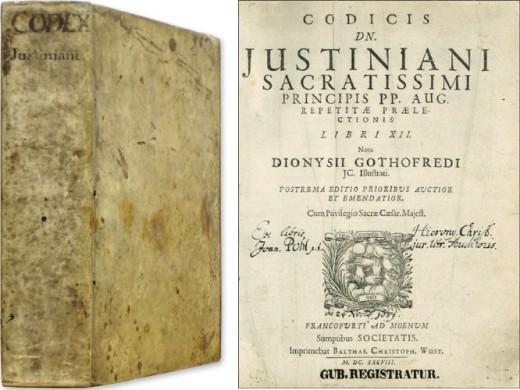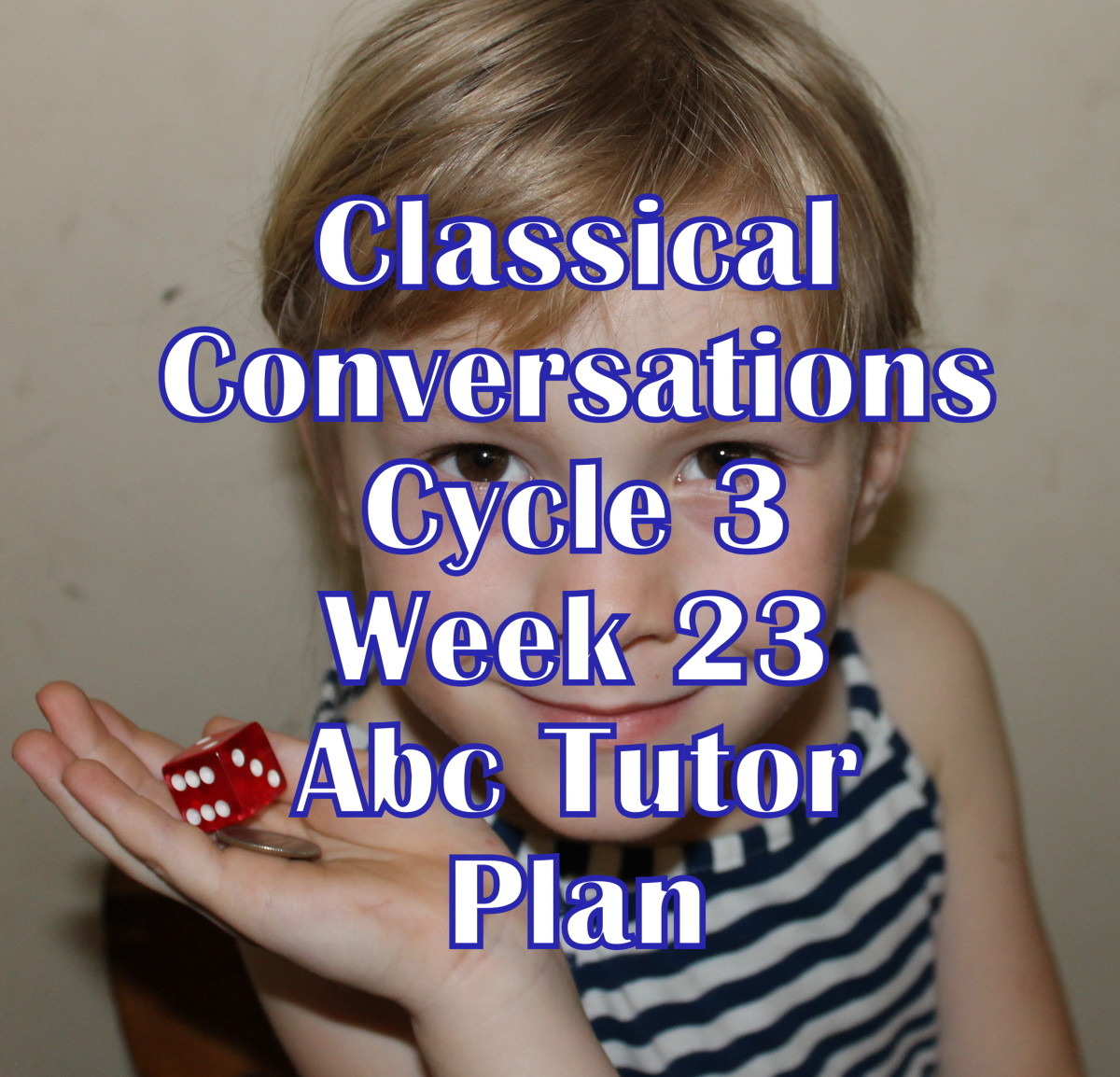Justinian's Code Lesson Plan


Emperor Justinian
Justinian’s Code
Objective
There are two main objectives for this lesson and within each of those objectives there are a few mini-objectives. These objectives are:
Ø The students will understand the complexity of law in Antiquity in order to help them not only understand, but also comprehend, what was lost in the symbolic ‘fall’ of the Western Empire in 475 A.D. and the advent of the Dark/Early Medieval Ages. They will gain a idea of what was lost with the collapse of ‘civilized society’, this will in turn provide them with the right mental context for the rest of the unit.
Ø The students will understand why Justinian is considered one of the ‘fathers’ of our legal system.
Ø One of the smaller, but just as important, objectives of this lesson is to expose the students to
o The Eastern Roman Empire
o The importance of the Eastern Orthodox Church/culture.
o Acknowledge that great cultural and technological advances that happened outside of Western Europe during the Dark/Medieval Ages
Standards
Ø 6.6.g. Explain why we study human actions in the past.
Ø 6.5.b. Demonstrate understanding of the relationships among powerful people, important events, and the lives of common people.
Procedures
Ø The Hook or beginning of this class will start off with the story of Justinian and his wife Theodora. This is one of the few times, unfortunately, this class will talk about the impact of women during this time so it should be told in a meaning full way.
Ø The class will then be handed out the graphic organizers and will be asked to read the quote on the top of the handout, “Justice is the perpetual wish to render everyone his due.”
o They will then be asked to talk to the person next them about what this could mean
o The students will then share with the class what they think the quote means in a very short discussion
Ø Next, the teacher will provide the class with a little background on Justinian. However, the class has already been introduced to Justinian and the Eastern Empire so this background talk should only be given in order to help the students remember what was last spoken of in class.
Ø Students, in their eagerness to learn, will pull out their pencils (which are already sharpened because they don’t want to waste one moment in class, I know amazing!), quite down and look up at the teacher with big doe eyes waiting for the lesson to start.
o This is the heavy content part of the day, so it’s a good thing they are soooo eager to learn. The graphic organizer, with the teacher, will be filled out at this point and every student will have it to refer back during the rest of the class discussion.
Ø The students will be asked about the rules or the consistency of rules through-out the school. The goal of this is to lead the students into talking about how annoying it is to have inconsistency in rules between classroom teachers. Some teachers will let students do things others wouldn’t. Once this discussion gets going and examples are used the teacher will ask them to imagine that frustration on a town level, state level and national level. The teacher will then make the connection with the Roman Empire; this will hopefully make this lesson more relatable because the student will be able to relate themselves to the Roman Empire.
Ø Cool or Not Cool – The activity
o Cool or Not Cool is a game designed to help the students understand how complex these laws were and therefore why within, Justinian’s code, there is a book for law students. Again making a connection to modern day; our legal system.
o The students will be put in groups and be given the marriage laws to read, they will have 5 min. to do this.
o The teacher will turn on the power point and each slide will have a different question concerning marriage and weather it would be legal according to Justinian’s code. If it is illegal the student groups would respond ‘not cool’, legal ‘cool.’ The students would have thirty seconds to work in their groups and find the answer (they are able to use the Marriage laws that were handed out).
o Example, can a brother marry a sister? Under Justinian the answer is no so the answer is ‘Not Cool.’
Adaptations for Diverse Learners
Ø Graphic Organizer – This will be handed out to all the students and thus allowing the teacher to know that everyone in class has the notes he/she needs. Some of these students will be stronger writers than the others, so every student will try to fill it out and those that are unable to keep up with the class there will be some pre-filled out graphic organizers for them after class.
Ø During the delivery of all the material the teacher will provide images on a power point for those that are visual learners.
Ø There will be points during every section/part of class where students will talk if not work with each other.
Ø The activity used during class allows those that are strong readers the challenge to read part of Justinian’s code and those that are not strong readers will still understand the martial because the will be engaged in audibly during the game trying to figure out who can marry who. After all, the purpose of the game is to have the students engage in the complexity of the code, not to necessarily understand it.
Materials and Resources
Ø Computer that has a projector for Power Point
Ø Graphic Organizer with a copy of the story about Theodora on the back side
Ø Pre-filled Graphic Organizer
Ø Pencils
Ø Hand sanitizer
Timing
Ø Story About Theodora (Hook)
o 5 – 10 Minutes
Ø Hand out and Talk about Justice Quote (Transition)
o 5 Minutes
Ø Justinian Background + Graphic Organizer
o 20 – 25 Minutes
Ø Consistency of the rules in the school
o 5 – 10 Minutes
Ø Handout and Have them read Marriage Law
o 5 – 10 Minutes
Ø Cool or Not Cool
o 20 Minutes
Assessment
Ø Informal Assessment – This will be on going throughout the day during the discussions. However, the really important discussion will be the one that includes the school rules. I will be looking to see if they understand the concept of the inconsistency of rules in school and the difficulty of traveling around the Roman Empire having different laws in different places and not having one true authority.
Ø Formal Assessment – Each group will have to have their ‘scribe’ (the class will have been put in groups that they will stay in for the rest of the unit. Each one of these groups will have a lord, knight, scribe and peasants and there are unique rules for each role) write at least two reasons why their group thinks we spent a class on Justinian’s Code and how they think it relates to class.
Analysis and Reflection
This lesson had its ups and down, there were sections I wish I had prepared for more and there are parts that I wish I had given more time too. I knew this going into the lesson and I knew it was not going to be the most gripping lesson I had. After all it is about a code that was written almost two thousand years age. But I tried to make it interesting and I think I did and I think the students were with me on this quest for the greater knowledge of man and self discovery where at times the sailing was great and at other times it felt like we were going to get sink, but it did not matter because we had each other, and with that we ready to conquer the world one class period at a time.
The hook I used did not grab their interest like I thought it would. I do not think it was because it was a bad story but because I am not a great story teller yet and I know I will become better the more often I do it, I just need to keep doing it. The quote worked fine but I do think I gave it the justice it deserved but I am really happy I kept the graphic organizer basic. I had two versions of the graphic organizer to start with and at the last minute I went with the more basic one and this allowed more time to field questions and go into more depth in certain areas.
One of my major successes was the game ‘cool or not cool.’ This really gave the students a perspective on the complexity of the code (especially considering the code was an attempt to simplify and mainstream the law) and they had so much fun playing that I wish I had given more time for this game.
One of my problems that were a recurring theme was time management, I think the more I teach the better I will get at managing time. Ironically, I thought it was going to be difficult filling the time but it turned out that I was over prepared and ran out of time. One the things I prepared in case I ran out of time was the Medieval Trivia game. I could use this anytime during the unit and the students enjoyed it and they learned from it. I used it more has a treat; if I felt the class had been working really hard I would pull it out towards the end of class. The students got really into this game and I think I am going add more to it and try to make it more integrated into the unit.
Constantinople

Hagia Sophia

Empress Theodora

- Bayeux Tapestry Lesson Plan
This is a great lesson plan for social studies teachers who want to teach their students about the Bayeux Tapestry. - Teacher Education: Are Colleges Properly Traning Teachers
Educational Reform needs to include how we train our teachers in traditional teacher education programs - Charter School Movement
The charter school movement is one of the most progressive large scale educational movements in the United States to date. These schools are truly on the forefront of diverse teaching and administrative styles. - studying for the praxis I exam
It is a hard test and here are some ways that may help you







